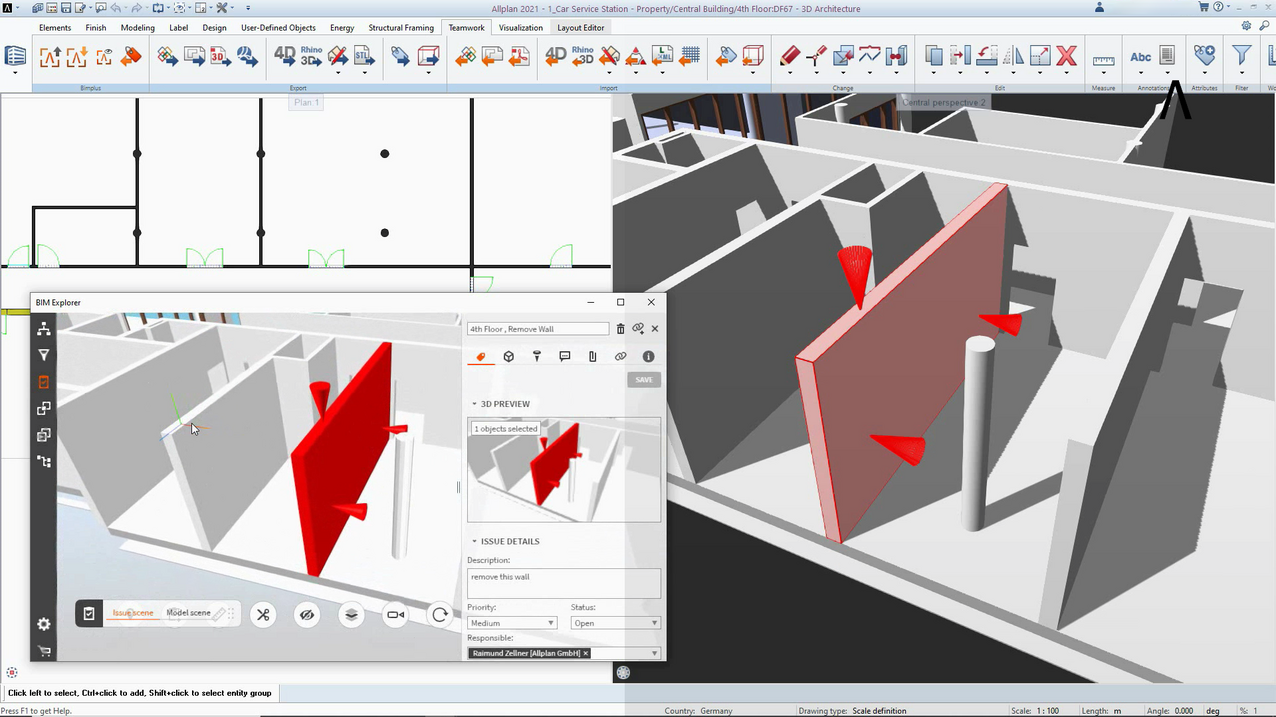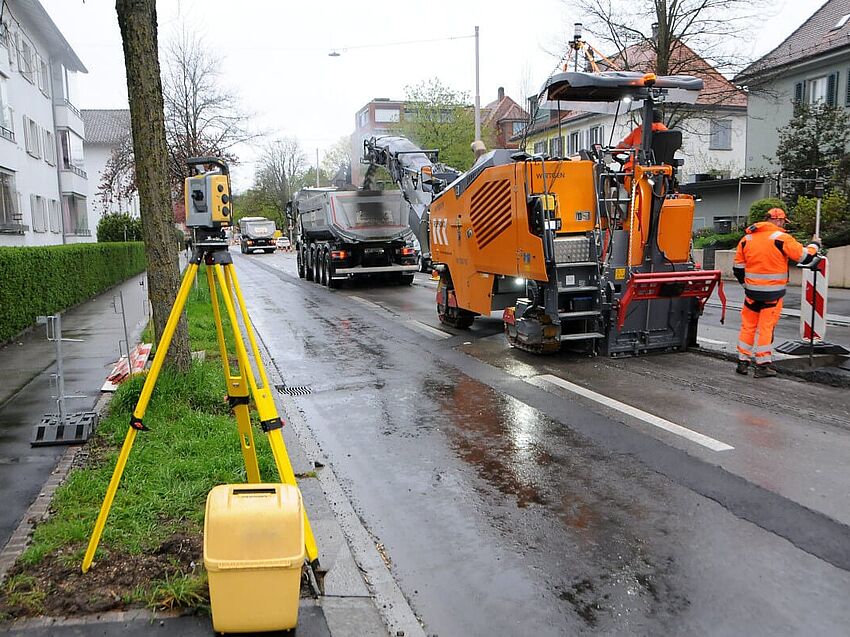By Nigel Rees & Thomas Mueller
At ALLPLAN, we often refer to the idea of an integrated workflow. But what does this term actually mean, and what are the benefits? In terms of the planning, design, and execution of a project using ALLPLAN, an integrated workflow can be described as putting a supporting structure in place to aid the primary workflow – such as the preliminary planning or detailed design – by adopting processes, content, technology, or a combination of these which improve the process. By doing this, there are fewer errors, increased productivity, more automation, and a reduction in manual tasks, as well as improved management of multiple activities. Here are three reasons why architects, engineers, and other project partners benefit from an integrated workflow.
1. Data Management – Coordinating and Sharing Information Effectively
To improve the data management process for all the connected teams across every phase of a project, Bimplus has been integrated into ALLPLAN. This combination ensures integrated workflows throughout the modeling process by delivering the information required by relevant stakeholders in the project, but also by bringing a high degree of workflow management into the whole process.
The need to share, coordinate, and manage information in a BIM framework is required now more than ever. However, connecting modeling software to the multitude of managed and unmanaged programs used in a project can lead to chaos. As this information comes from different systems – many of which are file based, poorly managed, difficult to use, and expensive – data can quickly and easily become mismanaged. By bringing Bimplus into ALLPLAN, an integrated BIM workflow and data management system is created, streamlining the systems, making data instantly available to the project teams, and ensuring that the single source of truth is maintained and governs the process. Everyone has access to the data they need for their own work, thanks to the transparent working processes.
Quick and easy access to the required data also helps drive productivity and informed decision-making. Viewing the federated model from Bimplus directly in ALLPLAN is easy via the integrated BIM Explorer and helps the team members to understand the design status in a holistic context. For example, the building services model can be visualized alongside the current architectural or engineering model, helping different disciplines understand how their activities overlap and affect each other. It also gives access to additional information – objects in ALLPLAN can have attachments where supplementary data is stored in Bimplus, such as calculation results from structural analysis software. An environment that provides all the necessary information for successful planning in this way is truly unique.
2. Change Management – Centrally Managing Issues and Tasks
Another area that significantly benefits from this integration is issue management. This is an incredibly important workflow that can suffer from poorly managed data, leading to further delays and problems. The close integration of Bimplus into ALLPLAN means issues can be managed effectively from within the 3D modeling software.
This offers several advantages to the project team. Without an issue management system, multiple emails may be received, phone calls taken, and instructions given from different parties who require changes for different reasons. The result is that it is not clear who should make changes, at what stage these are to be made, and who then carries the responsibility of taking these changes forward.
By developing a workflow within ALLPLAN – but governed by Bimplus – brings clarity and transparency to the change management procedure. The issue can be created in either platform, assigned to the relevant person in the team, visualized, annotated, assigned a deadline, and signed off, as well as easily tracked throughout the entire process. With the incorporated BCF workflow, incoming BCF files can be imported centrally in Bimplus, validated by the Project Manager or BIM Coordinator, and then assigned to the responsible team members, who receive the tasks in ALLPLAN – right where they require the information. This provides a more effective and efficient method for managing changes, which in turn improves productivity.

3. BIM Management – Fulfilling Client Requirements Easily
Integrated workflows are also the key to fulfilling a project’s BIM requirements easily and in a controlled way. The Employer Information Requirements (EIR) and BIM Execution Plan (BEP) are where these requirements are specified typically, stipulating what information is required for each object or element within the model. Although this may sound complicated, the solution is quite simple. Bimplus allows object property templates to be created, which can then be imported into ALLPLAN. The properties are quickly and easily attached to the model elements and just need to be filled in. This can happen either directly in ALLPLAN, or in various ways using the Bimplus platform. Bimplus opens the ALLPLAN environment to any project member, enabling them to easily contribute even without specific ALLPLAN knowledge. All that is required is an internet browser. For ease of input, Microsoft Excel can also be used, as Bimplus is cloud-based and has extensive integrations with everyday tools such as spreadsheets and project management software.
Enhanced Integration for Improved Project Outcomes
The integration of Bimplus and ALLPLAN offers unique solutions for reliable and secure data management, issue management, and BIM execution, resulting in improved collaboration and productivity for the whole project team. The ability to easily share accurate data with any stakeholder, even from an early stage of the project, ensures that misunderstandings are minimized, transparency is maximized, and productivity is optimized. With better integrated workflows, project outcomes – such as budget and schedule targets – are easier to deliver.




